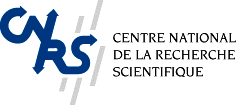
The CFHT dome at night, atop Mauna Kea - 4,200 m. elevation
Credit: Photograph by J.-C. Cuillandre, CFHT

The Canada-France-Hawaii Telescope (CFHT) is a non-profit organization which operates a world-class 3.6 meter telescope atop Mauna Kea, an extinct Hawaiian volcano rising 4,200 meters above the Pacific ocean.
The Mauna Kea volcano is the best ground based astronomical observing site known in the Northern Hemisphere, and CFHT was built on one of the best locations near the summit. The observatories on Mauna Kea benefit from the high altitude of the site which results in a clearer and dryer atmosphere, a darker sky, more clear nights per year and most importantly, sharper images thanks to the low turbulence of the atmosphere at the top of the volcano. CFHT was built in the late 1970s and saw first light in 1979. At the time of the first observations, the 3.6 meter telescope was the sixth largest in the world. Today's largest optical telescopes on Mauna Kea (Keck I & II, Gemini and Subaru) have mirrors sizes in the range of 8 to 10 meters!
Without innovative instruments, CFHT would soon become obsolete. Therefore, CFHT has undertaken an aggressive development program to equip the telescope with state-of-the-art instruments to remain competitive with the larger telescopes. The latest evolution on this front is the wide-field imaging program. Most large telescopes were designed to collect vast amounts of light but they have a reduce field of view. CFHT was designed for use with large photographic plates covering four times the size of the full moon on the sky. Taking advantage of the rapid evolution of optical electronic detectors (CCD) over the past two decades, CFHT is now able to cover most of its useful field of view with a detector 40 times more sensitive than the photographic plates. The CFH12K camera, a mosaic of twelve individual CCDs detectors, is the largest close-packed array in use in the world today (12,288 x 8,192 pixels). It saw first light on the telescope in January 1999 and has since collected an enormous amount of data, placing the CFHT community at the very forefront of the scientific competition.
Several of the CFH12K images have already appeared as the CFHT picture of week:
Telescope and dome characteristics:
This photograph was obtained using a Nikon 35mm EF1 camera body loaded with 800 ASA film (Fujicolor) in bulk exposure mode and a 35mm wide angle lens. The total exposure time is 1 hour and 30 minutes. July 10th, 1999, around 3AM.
The moon was not in the sky at that time of the night, still the airglow from the sky is high enough to properly illuminate the surroundings (it was pitch black to the bare eye). One can notice the greenish aspect of the sky, turning reddish towards the horizon. This is due to the various particles (dust grains) suspended in the Earth's atmosphere that scatter any light passing through. The thickness of the layer of air to be crossed by the light increases at low angles above Earth's surface, causing larger reddening. It is the same effect that causes the Sun to look red at sunset.
The star trails show the Earth's rotation since the camera was static relative to the ground. The celestial pole, the point in the sky where the sky seems to rotate around is close the star Polaris, seen here as the bright spot on the right of the dome. This rotation is due to Earth's rotation around its North-South axis which always points in the same direction during the year. In the Northern hemisphere, the areas around the celestial pole can be seen all year.
During the exposure, the dome rotated to follow the telescope tracking on the sky and seems a bit blurry. The telescope rotates on an axis aligned with the Earth's rotation axis but in the other direction to compensate exactly the Earth's rotation (360 degrees in 24 hours). That way, objects observed with the telescope seem still and their light can be accumulated for long period of times on our sensitive instruments.
The inside of the dome is very dark so no light contaminates the observations. But for the needs of that picture, the top of the telescope (the prime focus cage here, containing the CFH12K camera) was flushed with flashlight for a couple of seconds when we were not exposing on an astronomical object.
A few faint lamps equip the floor level of the CFHT building and seem fairly bright on this photograph. Light pollution is a concern amongst the astronomical community atop Mauna Kea, and these lights are faint enough for not causing any degradation on the other telescopes observing conditions.
The silhouette of one of our powerful four-wheel drive can be seen: it is a Chevrolet Suburban that gives a good idea of the building scale.



